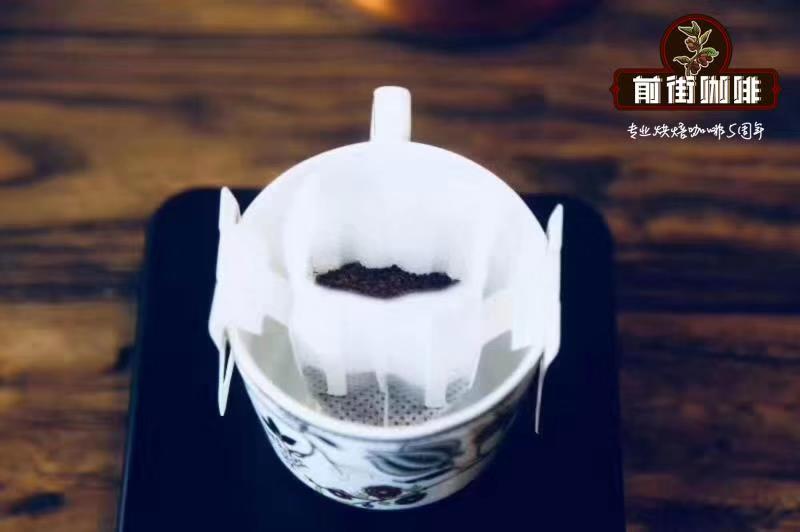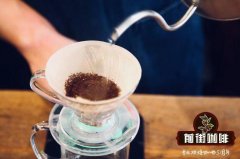Introduction to the flavor and taste of green peacock in Vietnam and Burma boutique coffee washing treatment

Professional coffee knowledge exchange more coffee bean information please follow the coffee workshop (Wechat official account cafe_style)
In Asia, which has a vast continent, the origin of coffee can be traced back to many versions. The most famous of these is Indonesia, which is famous for its earthy or smoky smell. Some people in the industry said that in fact, beans with rich fruit flavor and taste can also be found in India.
Vietnam is the second largest coffee producer in the world. However, Vietnam mainly produces Robusta, a coffee variety known for its bitterness and aromatherapy.
Lesser-known countries also produce crops with distinctive flavors. Myanmar has left a deep impression on the coffee industry with its clean and high-quality coffee flavor. Papua New Guinea can produce sweet fruity coffee, although it also faces infrastructure challenges. Of course, the Philippines, Thailand, India, Laos. These countries also gradually can not be ignored.
/ soil and climatic factors
Why does coffee taste different depending on where it is planted?
Part of it boils down to environmental factors-also known as vernacular. Wind and soil conditions are divided into soil conditions, topography, climate and so on. This was originally a common word in the wine world, but it is also used by coffee professionals.
The Galapagos Islands are a typical example of being affected by wind and soil conditions. It is across the equator, it is not difficult to imagine that the local is a hot climate, not in line with the general coffee bean growth environment. Most coffee beans are grown at high altitudes, and lower temperatures make the fruit grow more slowly, resulting in more sweetness and more complex flavors. However, these islands can surprise consumers with their high-quality coffee. All this is due to the climate brought by cold sea breezes and ocean currents.
/ effect of processing methods on flavor
Three mainstream processing methods
How coffee beans are grown and processed will also affect their taste. Moreover, agriculture and processing methods are different in different regions. Processing is the method of removing coffee beans or seeds from coffee fruit. There are several ways to affect the taste of coffee and its environmental footprint.
There are three main ways to handle coffee:
Washing: remove the pulp of the coffee through a sheller, then ferment it in a fermentor, and finally dry the coffee beans, resulting in clean, mucous-free coffee beans. Washing can prevent beans from unnecessary fermentation, but this method is expensive and may lead to water pollution. This treatment is common in Colombia, Guatemala and East Africa.
Solarization: the coffee fruit is dried directly in the sun, so the pulp is still attached, retaining the complete sweetness, fruit flavor and mellow flavor. It is cheaper than washing, but its quality is difficult to control because the sun means good weather quality.
Semi-washed: also known as honey treatment, part of the pulp is removed before drying, and you will get varying degrees of sweetness and mellowness depending on the amount of pulp left on the beans. This method is popular in Costa Rica and Brazil.
In addition to the above three treatments, there are also many novel coffee bean treatments. In Indonesia, for example, extreme humidity causes producers to wet coffee bean shells; double washing is common in Kenya, Rwanda and Burundi, and experimental treatments are becoming more and more popular. With the development of the times and the reform of the industry, I believe that more treatment methods will gradually show a popular trend.
Burmese washed green peacock
Origin: Myanmar
Flavor: citrus, virgin fruit, brown sugar
Variety: original species
Altitude: 1500 m
Treatment: washing
Baking degree: light baking
END
Important Notice :
前街咖啡 FrontStreet Coffee has moved to new addredd:
FrontStreet Coffee Address: 315,Donghua East Road,GuangZhou
Tel:020 38364473
- Prev

Which producing area and which variety is the best coffee bean in Yunnan | learn about Yunnan coffee bean trading market
Professional coffee knowledge exchange more coffee bean information please follow the coffee workshop (Wechat official account cafe_style) Yunnan International Coffee Trading Center, as the trading platform and service platform for Yunnan coffee, has been actively exploring the international market
- Next

What's good for individual coffee | do you know what well-known individual coffee beans have? let's find out.
Professional coffee knowledge exchange more coffee bean information Please pay attention to coffee workshop (Wechat official account cafe_style) usually use single product coffee beans as raw materials, coffee beans roasting degree from light roasting, medium roasting, deep roasting, hand coffee mostly use filter cup brewing, first grind coffee beans into powder and then put into filter paper, start slowly into hot water, pour evenly on the whole coffee powder, thoroughly filter
Related
- Beginners will see the "Coffee pull flower" guide!
- What is the difference between ice blog purified milk and ordinary milk coffee?
- Why is the Philippines the largest producer of crops in Liberia?
- For coffee extraction, should the fine powder be retained?
- How does extracted espresso fill pressed powder? How much strength does it take to press the powder?
- How to make jasmine cold extract coffee? Is the jasmine + latte good?
- Will this little toy really make the coffee taste better? How does Lily Drip affect coffee extraction?
- Will the action of slapping the filter cup also affect coffee extraction?
- What's the difference between powder-to-water ratio and powder-to-liquid ratio?
- What is the Ethiopian local species? What does it have to do with Heirloom native species?

